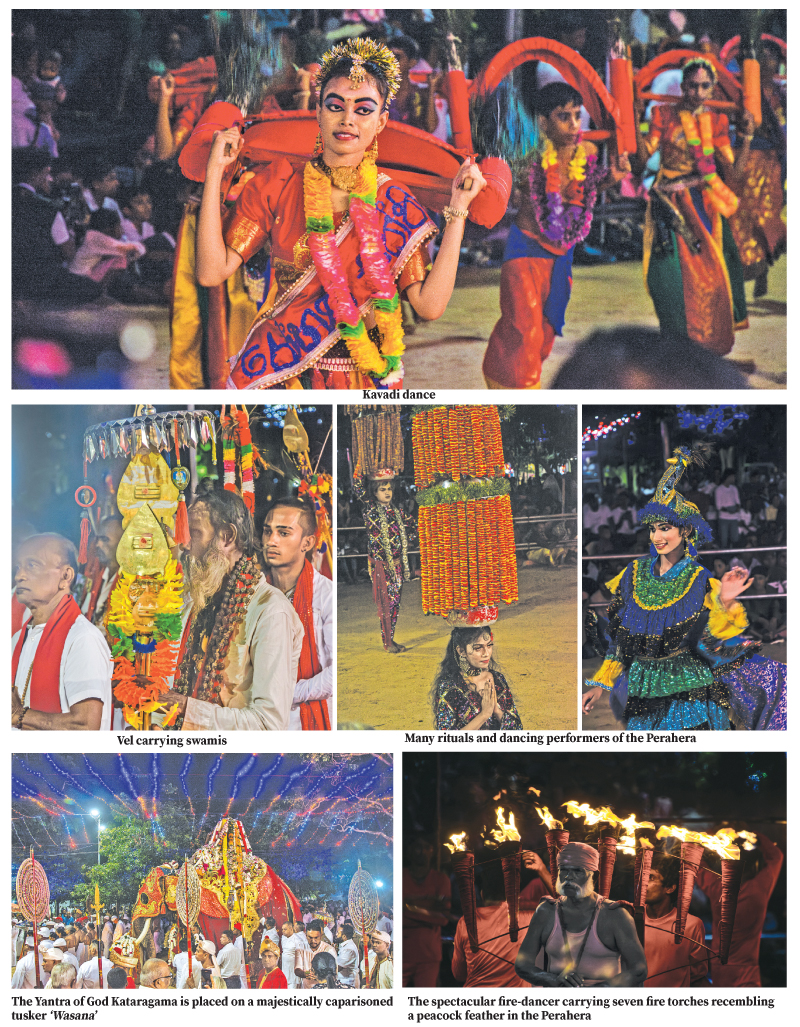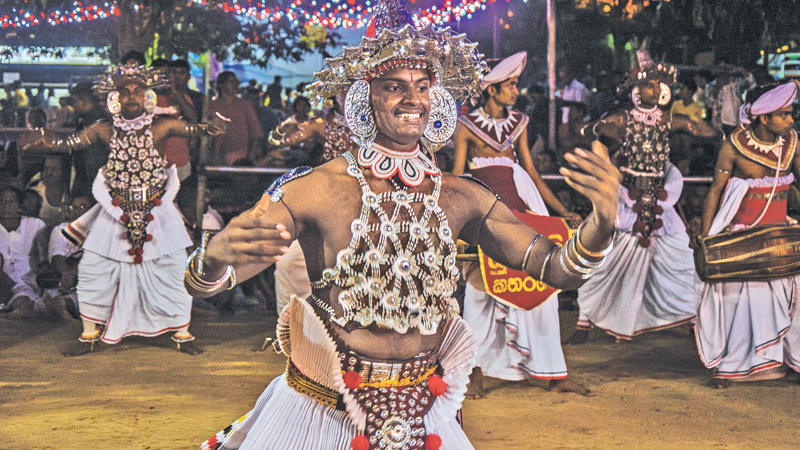The Kataragama Esala Perahera is one of the most significant annual rituals among Hindu devotees in Sri Lanka.
 Pageantry, ceremony and ritual are part of everyday life in Sri Lanka. No matter when you are in the country, you are bound to be caught up in some form of national celebration. However, in July and August, people are fortunate to witness two of the country’s most spectacular pageants: the Kataragama festival and the Kandy Esala Perahera.
Pageantry, ceremony and ritual are part of everyday life in Sri Lanka. No matter when you are in the country, you are bound to be caught up in some form of national celebration. However, in July and August, people are fortunate to witness two of the country’s most spectacular pageants: the Kataragama festival and the Kandy Esala Perahera.
The Kataragama festival is awesome and fascinating in different ways. Unlike the grand spectacle of the Kandy Esala Perahera, which is a staged visual treat of dancing, drumming and the slow parade of 100 caparisoned elephants, the Kataragama festival is a spontaneous procession of devotees whose feverish worship of the Kataragama God, Skanda, makes it an unforgettable experience.
Awe-inspiring ritual
With the reverberations of the Hindu devotees’ chant ‘Haro Hara’, one evening of last week, armed with a camera, I walked in the holy ground of the main shrine of Kataragama to capture the celebration alive with colour, light and sound. As the multitudes follow the caparisoned elephants to the chants of ‘Haro Hara,’ the drums throb, and the bells chime. Devotees bearing semi-circular kavadis on their shoulders dance in worship of the god, while others perform their acts of penance.
The Kataragama Esala Perahera in the historical Ruhunu Maha Kataragama Devalaya in the deep-South of the country, concludes today with much reverence. An awe-inspiring annual ritual, which has been held for centuries; the festival draws thousands of devotees from various faiths and ethnicities who unite in worship as they pay reverence to the God Kataragama, the deity with six faces and 12 hands, mounted upon a peacock.
The 15 days of the festival is a deeply sacred time in Kataragama. There is an air of exultation, with streets beautifully lit-up and decorated for the celebrations worshipping the deity also known as God Skanda and Lord Murugan. Worshippers of the God travel from across Sri Lanka for the festival. One of the most important aspects of the Kataragama festival is the Pada Yatra.
It is a walk of faith by the devotees who travel from Jaffna to the island’s Southern coast in time for the Kataragama Perahera. Generally, the procession commences from Nagadeepa in the North and thousands of pilgrims brave the walk through wild terrain amidst rain and sun.
Spiritual voyage
The origins of the Pada Yatra are linked to the Veddhas or indigenous people of Sri Lanka, who made the long journey in honour of their jungle princess Valli Amma, who was God Kataragama’s consort.
As a testament to their profound belief, the pilgrims – men, women and children, embark on this spiritual voyage, walking through the East coast jungles and dry land with only the bare necessities. They camp in the open at night or at places of worship. Fellowship and constant prayer is part of the experience. Villagers along the route provide the pilgrims with alms. The Kataragama Pada Yatra is a journey of faith and of rediscovering the meaning of life through self-denial.
The Kataragama Perahera begins with the hoisting of the flag, which was held on July 7. In addition to the grand processions, there are many worship rituals such as firewalking, which was held on July 18. Firewalking is an overwhelming act of penance, where devotees immerse themselves in prayer and meditation, and walk on a bed of red-hot embers. Another important form of worship to the deity is Kavadi, the burden dance or an offering of sacrifice, done in gratitude for fulfilled vows or as a form of veneration. Those who perform Kavadi do so after an extensive period of preparation, which includes prayer and fasting. There are many types of this ritual, including bearing on their shoulders structures decorated with peacock feathers and flowers.
Maha Perahera
Thooku Kavadi is performed by devotees who are fulfilling vows to the God. They are suspended from iron hooks in various forms and the ritual depicts the great faith placed on the divine. The climax of the Kataragama Esala Perahera is the ‘Maha Perahera’, which is held today, July 21. The Relic or Yantra of God Kataragama is placed on a majestically caparisoned tusker. Drummers set the beat and various dances add vibrance to the procession.
The sacred grounds of Kataragama and surrounding streets sparkle beneath a canopy of colourful lights. The festival ends with Diya Kepime Mangallaya – the cutting of water, on the day after the Maha Perahera. The Esala Festival features a series of vibrant processions, culminating in the grand Water Cutting ceremony on July 22, tomorrow, at the Jeevamali Ferry on the Menik Ganga.










